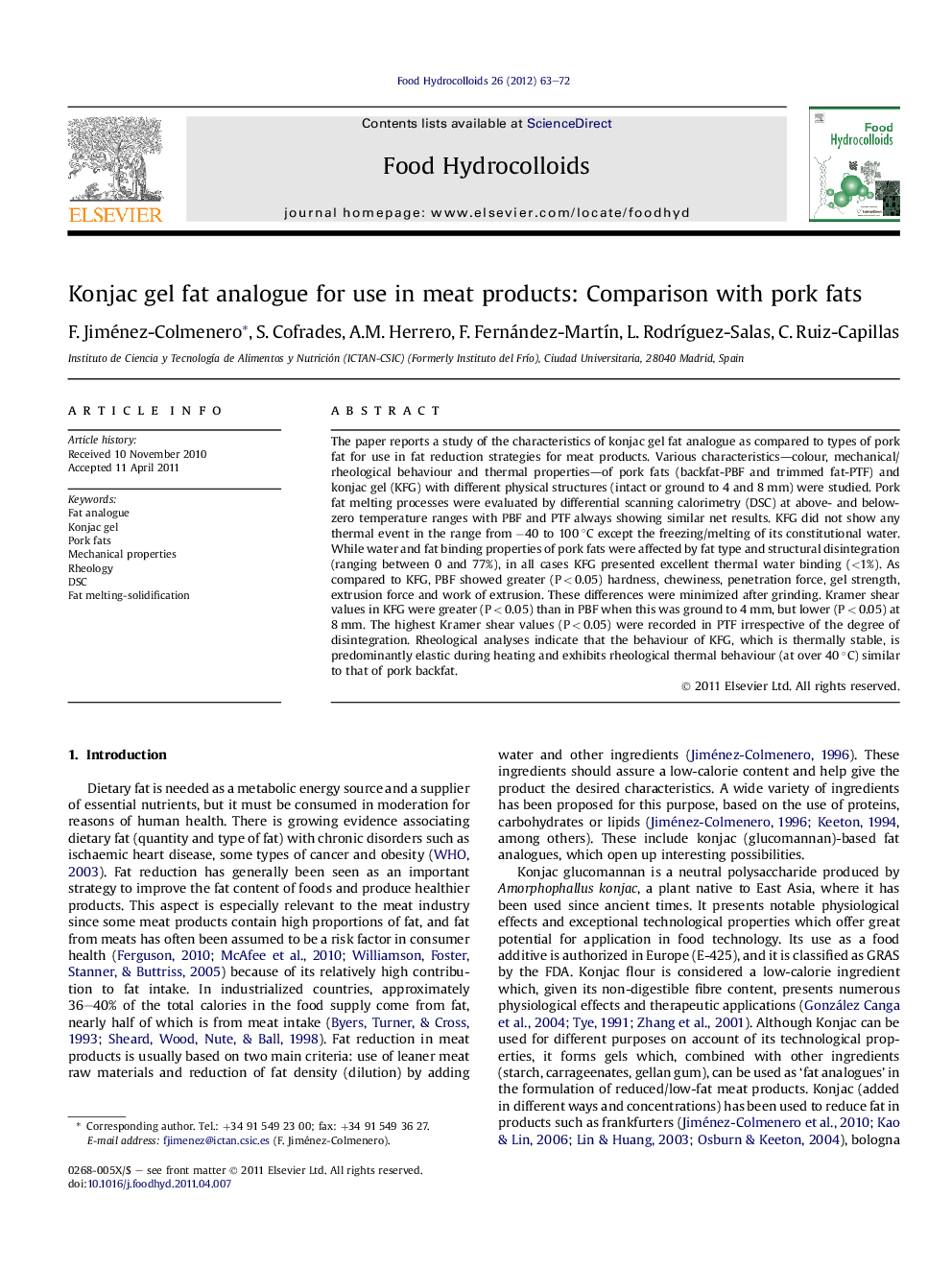| Article ID | Journal | Published Year | Pages | File Type |
|---|---|---|---|---|
| 604981 | Food Hydrocolloids | 2012 | 10 Pages |
The paper reports a study of the characteristics of konjac gel fat analogue as compared to types of pork fat for use in fat reduction strategies for meat products. Various characteristics—colour, mechanical/rheological behaviour and thermal properties—of pork fats (backfat-PBF and trimmed fat-PTF) and konjac gel (KFG) with different physical structures (intact or ground to 4 and 8 mm) were studied. Pork fat melting processes were evaluated by differential scanning calorimetry (DSC) at above- and below-zero temperature ranges with PBF and PTF always showing similar net results. KFG did not show any thermal event in the range from −40 to 100 °C except the freezing/melting of its constitutional water. While water and fat binding properties of pork fats were affected by fat type and structural disintegration (ranging between 0 and 77%), in all cases KFG presented excellent thermal water binding (<1%). As compared to KFG, PBF showed greater (P < 0.05) hardness, chewiness, penetration force, gel strength, extrusion force and work of extrusion. These differences were minimized after grinding. Kramer shear values in KFG were greater (P < 0.05) than in PBF when this was ground to 4 mm, but lower (P < 0.05) at 8 mm. The highest Kramer shear values (P < 0.05) were recorded in PTF irrespective of the degree of disintegration. Rheological analyses indicate that the behaviour of KFG, which is thermally stable, is predominantly elastic during heating and exhibits rheological thermal behaviour (at over 40 °C) similar to that of pork backfat.
Graphical abstractFigure optionsDownload full-size imageDownload as PowerPoint slide
